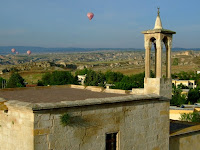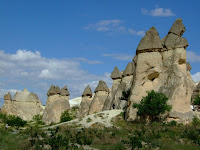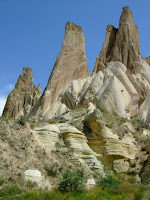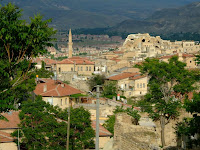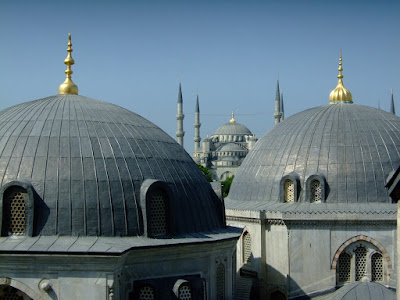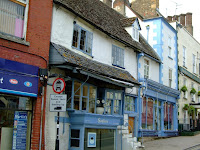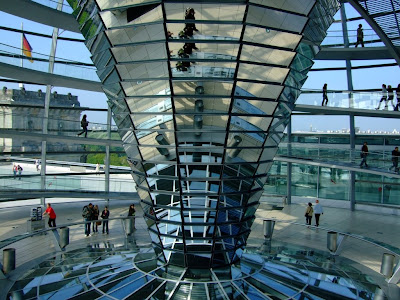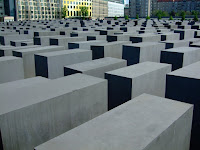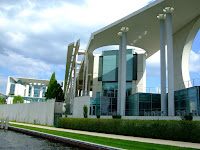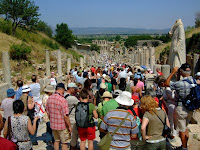 Feeling much more dead than alive we arrived at Irzim to be hustled off the intercity bus onto a mini-bus that clearly had been held back for us. This took us to Selcuk where we were, at last, met by a man with our name on a card. He took us to the local agency where we had to find a change of clothes for the hot day ahead.
Feeling much more dead than alive we arrived at Irzim to be hustled off the intercity bus onto a mini-bus that clearly had been held back for us. This took us to Selcuk where we were, at last, met by a man with our name on a card. He took us to the local agency where we had to find a change of clothes for the hot day ahead.  Although the itinerary promised that we would, once again, be taken to our hotel this was not offered, as the hotel was some 30-minute's drive away. Had we known, we could have kept a change of clothes accessible.
Although the itinerary promised that we would, once again, be taken to our hotel this was not offered, as the hotel was some 30-minute's drive away. Had we known, we could have kept a change of clothes accessible.Eventually the rest of the day's tour party arrived and we set of for Ephesus, along with the many other tour buses and the disgorged contents of
 4 cruise ships in the harbour. The place was packed, but according to our guide, only about 50% of a really busy day. There are some magnificent structures and, although they are all reconstructions, they do give an impression of the original grandeur of this ancient city.
4 cruise ships in the harbour. The place was packed, but according to our guide, only about 50% of a really busy day. There are some magnificent structures and, although they are all reconstructions, they do give an impression of the original grandeur of this ancient city.The temperature was probably in the high 30s so it was very pleasant to spend some time in the local museum looking at the artefacts that have been discovered at Ephesus.
 Two features of the collection are the almost intact statues of Artemis that were discovered buried here, some miles away from the site of the Temple of Artemis. The original temple site is just that, a site and one column, all that is left of what was once described as one of the seven wonders of the ancient world. As is typical, much of the solid marble temple has been recycled into other buildings including the nearby mosque that we visited later that day.
Two features of the collection are the almost intact statues of Artemis that were discovered buried here, some miles away from the site of the Temple of Artemis. The original temple site is just that, a site and one column, all that is left of what was once described as one of the seven wonders of the ancient world. As is typical, much of the solid marble temple has been recycled into other buildings including the nearby mosque that we visited later that day.But, before then it was time for another commercial break; this time a carpet showroom. The sell here was distinctly softer due mainly
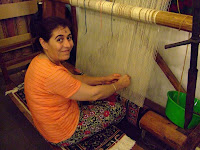 to the fact that the presenter was born and brought up in Australia so better understood the psyche of the audience.
to the fact that the presenter was born and brought up in Australia so better understood the psyche of the audience.We were presented with a fascinating array of carpets from the different regions and an explanation of the different colourings and patterns. We also say the technique used to unravel the silk thread from the silkworm cocoon. Most intriguing.
 After the aforementioned visit to the mosque it was time to be delivered to our hotel, in a fabulous location right on the waterfront. The fact that we were so tired after a long day in the sun and the bus ride the night before, coupled with an early start the next morning meant we did not get any benefit from the facilities and location: sleep was our priority.
After the aforementioned visit to the mosque it was time to be delivered to our hotel, in a fabulous location right on the waterfront. The fact that we were so tired after a long day in the sun and the bus ride the night before, coupled with an early start the next morning meant we did not get any benefit from the facilities and location: sleep was our priority.
